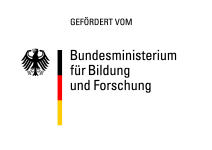At present, storms, heat and cold waves, droughts, heavy rainfall, episodes of increased air pollution as well as combinatorial effects of these events are causing health hazards, deaths and serious economic damage. Due to high population density and modifications of atmospheric processes caused by urban structures, there is a particularly high need for action in large cities and urban areas. By regional consequences of global climate change, these problems will intensify in future decades and make extra efforts mandatory.
A building-resolving urban climate model can contribute to solving these problems as a tool for urban planning. The model enables demand-oriented and practical actions for climate change adapted development in urban planning.
So far, building-resolving atmospheric models for entire large cities and urban areas are missing. Available urban climate models provide either coarse resolution or cover only small urban areas. Furthermore, previous urban climate models cannot be combined with large-scale numerical models that are common for weather forecasts or regional climate projections.
In addition, users of urban climate models, e.g. practitioners in urban development and planning, usually do not have sufficient expertise, tools and computing infrastructures. The new urban climate model should therefore be complemented with a user friendly graphical interface and run on PCs with limited resources. The integration of selected application examples and user groups in the modelling process ensures the practicability of the new urban climate model.

